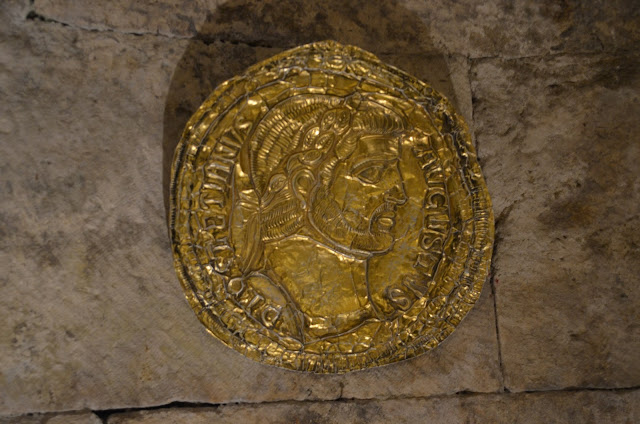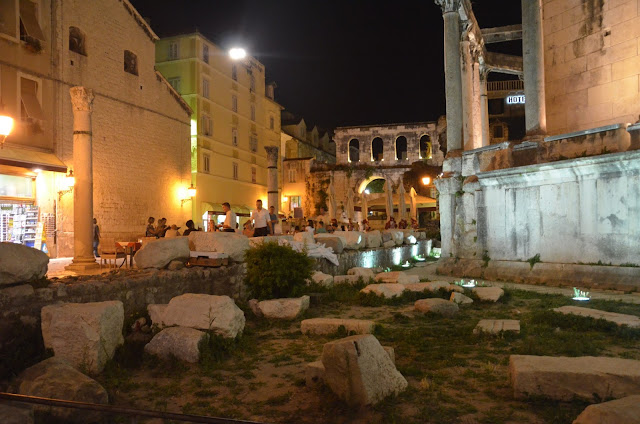
After a string of picture-perfect small towns, Split provided a welcome injection of urban grit and style along with its own impressive monuments.

Although it draws plenty of tourists as the hub of the Dalmatian coast, Split is an industrial and administrative center in its own right. The local population is sufficient to outnumber tourists, which hasn't been the case for much of our journey so far.
It was the first city we've visited on the trip that was big enough to have a major soccer club (in this case, Hajduk Split) and semi-lethal rivalries with towns like Zagreb and Belgrade.
The Hajduks were a band of patriots, or pirates, depending on your point of view, that arose against the Ottoman Turks in the 17th century, but today they are the embodiment of civic virtue in Split, and their name is invoked to sell everything from beer to ice cream.
The city's lively port is full of ferries serving various Dalmatian islands and cruise ships disgorging tourists onto the broad Riva.
We made a pilgrimage to the museum housing the works of Ivan Meštrović, Croatia's prolific 20th-century sculptor and national icon.

Meštrović's figures from Croatian history were necessarily somewhat lost on us, but the Biblical material rang true -- everyone could relate to the kind of day Job was having.
The campanile in the center of town offered an enviable view of the sea, mountains and the ancient city nested within the modern one.

We weren't the only ones enjoying the sights.
Split's undisputed highlight, however, is Diocletian's Palace, a unique Roman ruin that forms the core of the old city.
Diocletian built the complex early in the 4th century, probably to get away from the Roman commute.
Though he was one of the more innovative emperors, Diocletian is best known today for his rigorous persecution of Christians.
Though his martyr count was impressive, the joke was ultimately on him -- Diocletian's mausoleum was converted into a church after his successors adopted Christianity as Rome's state religion.
The palace subsequently fell into ruins and was abandoned. But not for long. New residents re-colonized it and a new town grew up within the palace walls. Or, to put it in terms we Pacific Northwesterners would understand, the Roman ruin served as a nurse log for successive medieval, Renaissance and modern saplings that grew up in and around it.
The result is a uniquely organic fusion of periods and styles, an archeologist's field day.
Meanwhile, beneath the city, the vast cellars and dungeons of the palace were buried for centuries, only to be excavated by our intrepid team of travelers.
Our last night in in town was bittersweet as we knew our Xannie Nanny would split in Split the next day. She was great company, and a huge help for the two weeks she spent with us. Next time we'll be sure to book her for the whole trip!
But we took advantage of one last nanny-night to enjoy some great music (and even a little dancing, truth be told) among the ruins.























No comments:
Post a Comment